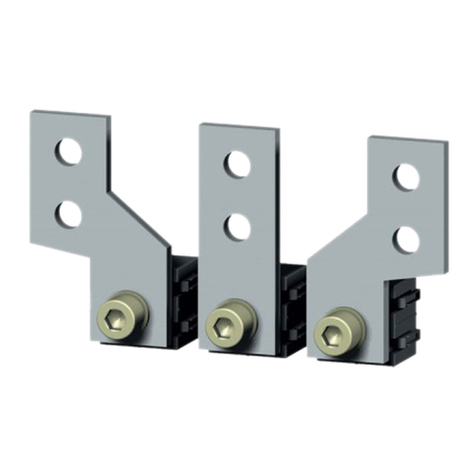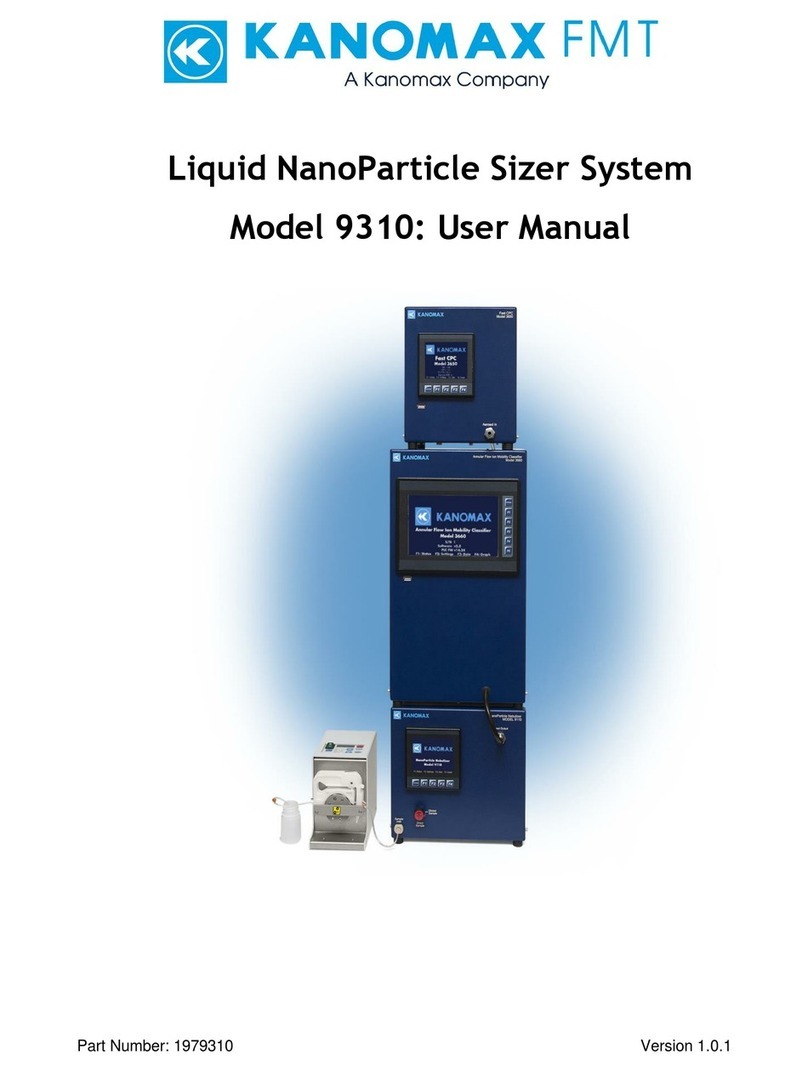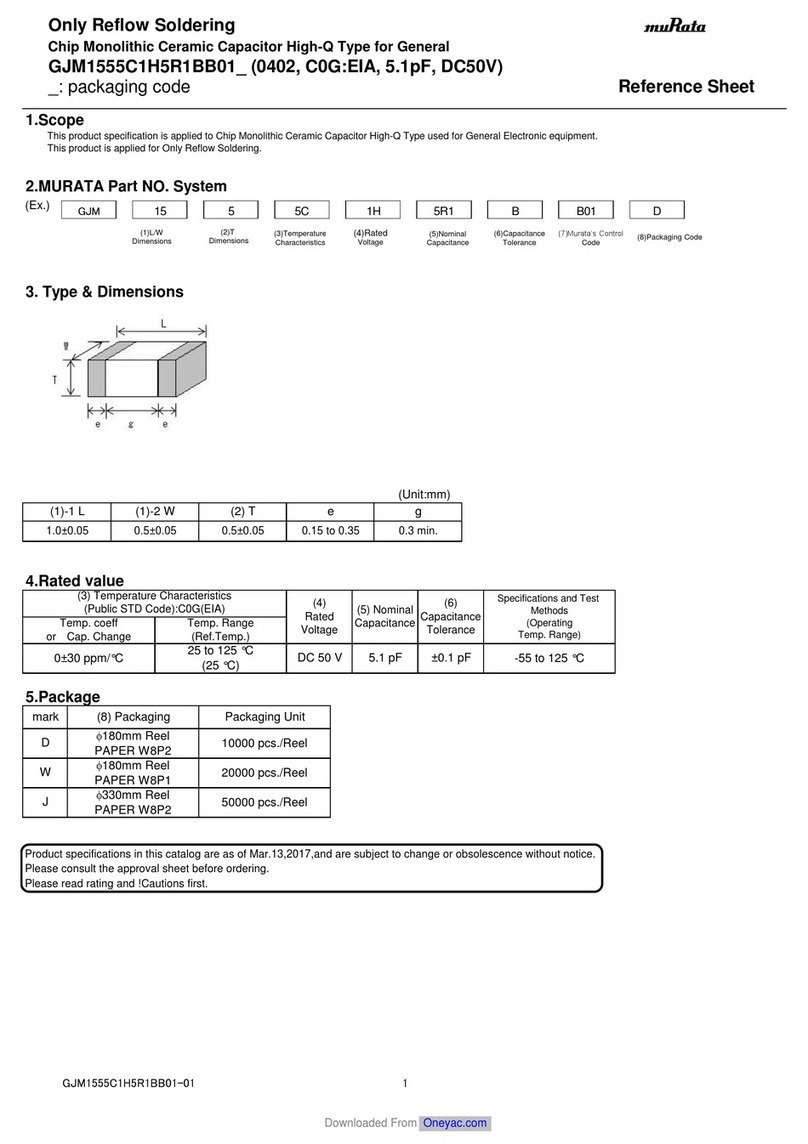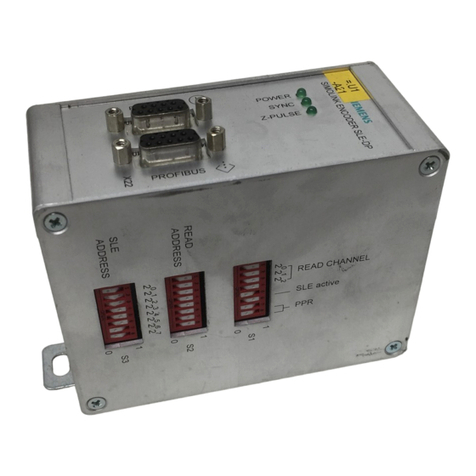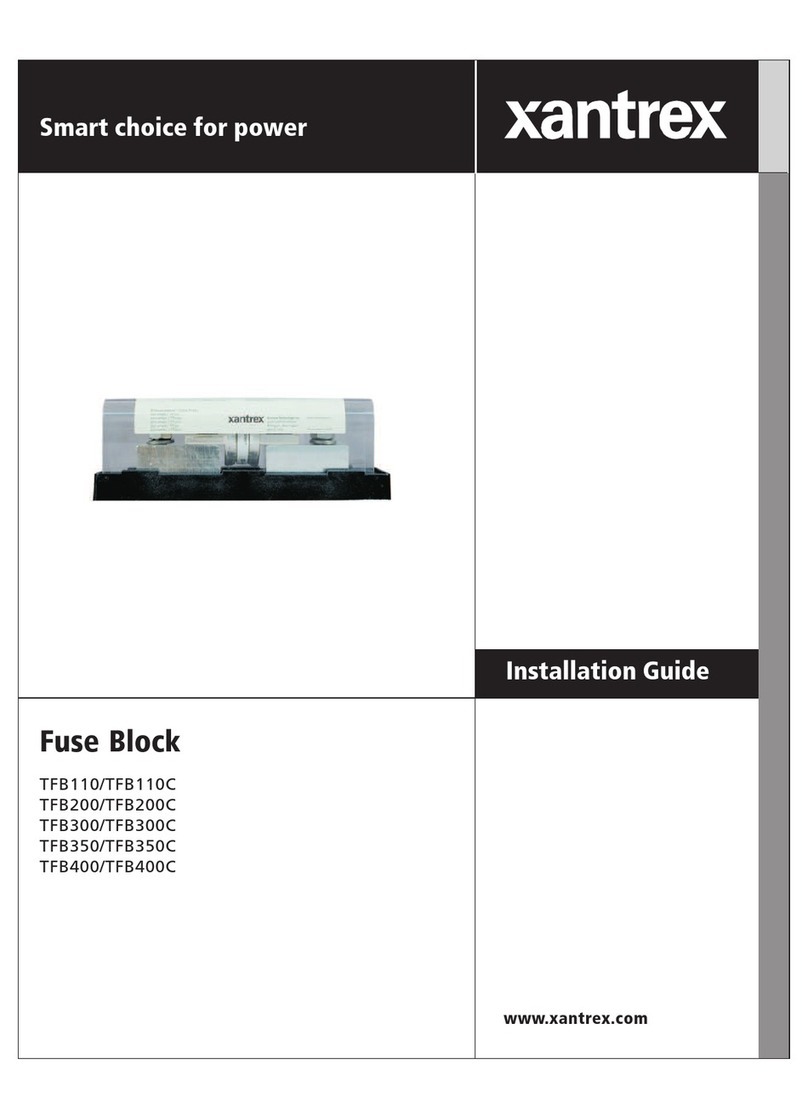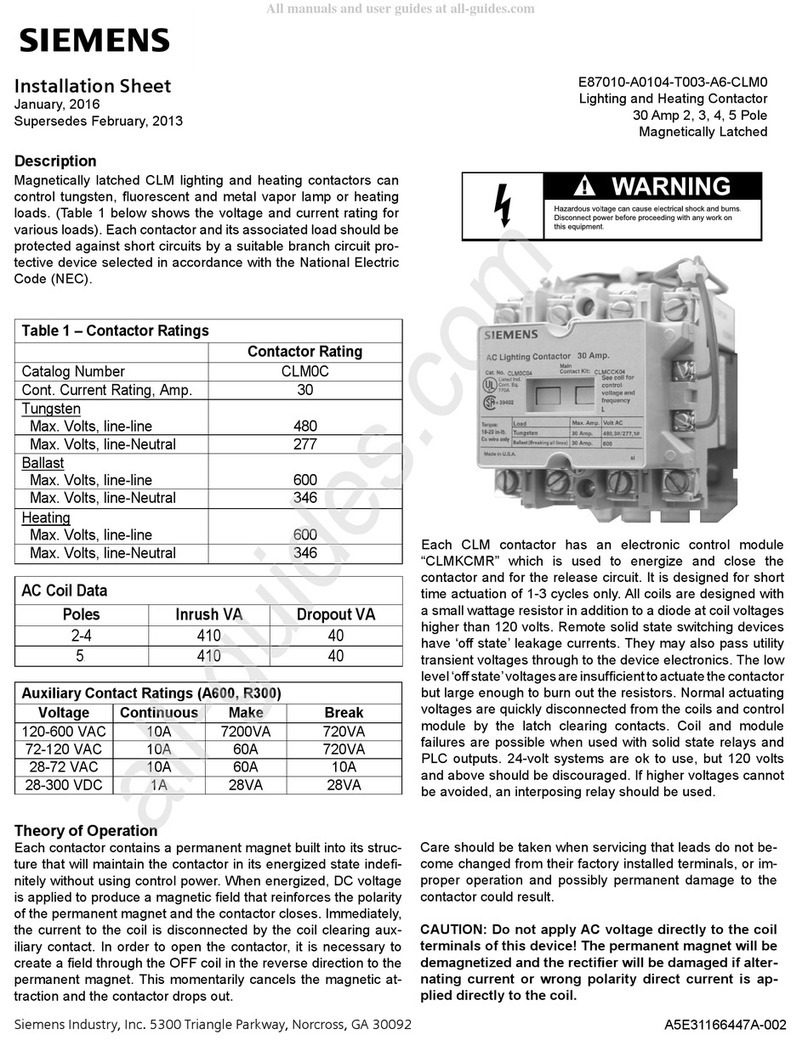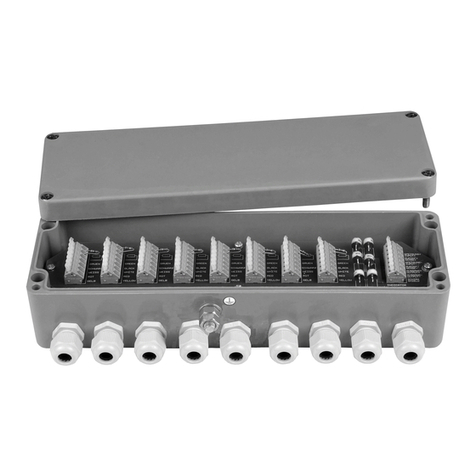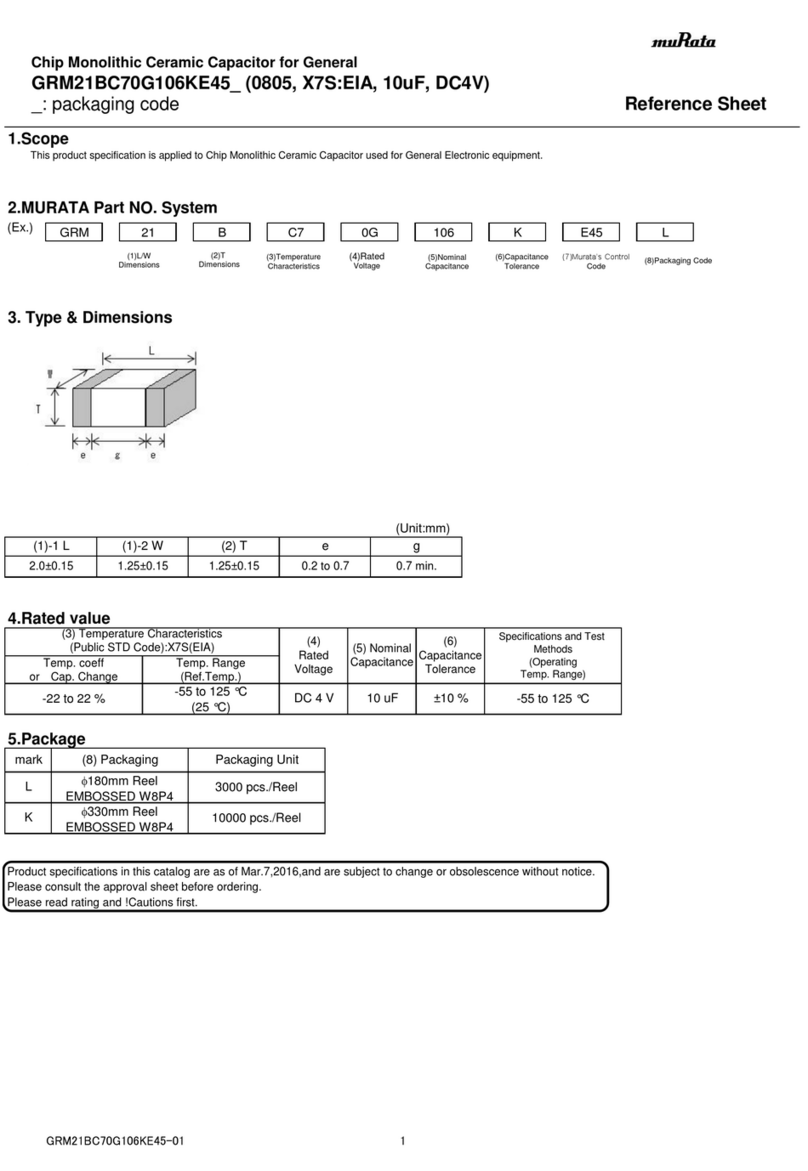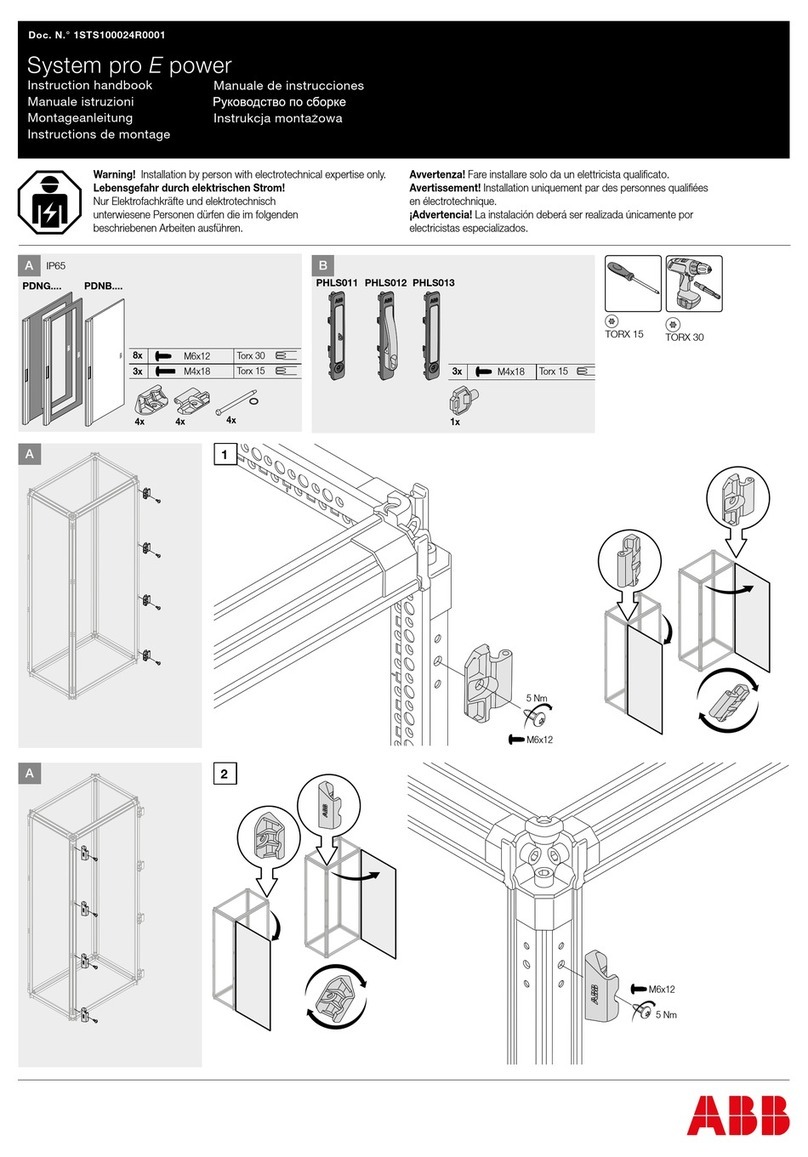High Voltage CDS Series Guide

Safety,Operation,andProcedureInstructionsfortheCDSSeriesof
CapacitorDischarge/HipotCableFaultLocators
Danger- Lethal Voltages:
Equipment to be used by trained personnel only
This Operator Manual contains instructions for the operation of a High Voltage power source. The operator of this equipment
must use good judgement and follow all safety precautions noted in this guide to ensure the protection of himself and others in
close proximity to the test area. Failure to follow the instructions could result in injury or
death. Proper grounding of the test set must be done prior to connecting this
unittoapowersource.
CD
S
SERIES

OperatorManual
©HIGH VOLTAGE, INC.
31CountyRoute7A
Copake,N.Y.12516
Phone518/329-3275• Fax 518/329-3271
http://www.hvinc.com

LAST SAVED 1/27/2009 10:45 AM, T:\PRODUCT\DOCUMENTS\Manuals\CDS\MANcdsURa_tdr1_2k9.doc
TableofContents
About the Operator Manual 1
SECTION 1
General Information 2
Theory of Operation 2
Features and Specifications 3,4
Controls and Indicators 6,7
SECTION 2
Setting up the Equipment 8
Operating the Equipment 9-17
Hipot / Burn Mode 9-11
Capacitor Discharge Fault Locating (Thumping) 12-14
Capacitor Discharge Fault Locating (TDR) 15-17
Blank Page for Notes 18
SECTION 3
Performing Special Operations 19
Miscellaneous 19
Return Material 20
Warranty 21,22

OPERATOR MANUAL
- 1 -
AbouttheOperatorManual
Important
ThisOperatorManual describesthefeatures andsafe operation
ofaHigh VoltageTestSet.The instructions areintended tobe
clear andsimple, but theoperator must betrained and qualified
according to established procedures forthe useof this typeof
equipment.
This Operator Manual is organized to provide information on the CDS Series in steps that
familiarizethe newoperator with theentire scopeof operation of thistest set.
Section1: Specifications andControls.
Section2: Setup andOperation.
Section3: Performing SpecialOperations.
TheFunctions,Features,andSpecifications oftheCDSSeriesofCapacitorDischarge/HipotCableFault
LocatorsarealsodiscussedintheCDSBrochureavailablefromHighVoltage,Inc.

OPERATOR MANUAL
- 2 -
GeneralInformation
Thissection familiarizes theoperator withthe features andspecificationsof the
CDS Series of Capacitor Discharge/Hipot Cable Fault Locators manufactured by HIGH
VOLTAGE, INC.
Operation of this unit with standard TDR fault locating devices is possible using the internal Arc
Reflection Filter.
TheoryofOperation
With the use of buried underground cables in primary feed electrical installations, it is necessary to
locate faults and repair the cable the cable as quickly as possible to restore power to affected
areas. The CDS Series of Capacitor Discharge/Hipot Cable Fault Locators uses an energy
storage capacitor to provide a pulse of energy to create an audible sound at the fault location for
tracing. HVI CDS series fault locators all have built in Arc reflection filters for use with most TDR’s
(RADAR)on the marketat thumpvoltages upto 25 kV.
SECTION
1

OPERATOR MANUAL
- 3 -
FeaturesandSpecifications
The CDS Series of cable fault locating test sets provide continuously adjustable output voltages for the test
and location of faults in primary cables. The constant energy design provides the maximum energy at the
lowestvoltage to quickenfault locationwhile notoverstressing the cablesand terminations.
Standardfeatures ofthe CDSSeries of CapacitorDischarge/Hipot FaultLocator
•Continuouslyadjustable output voltage
•“Zero Start” Interlock provision
•Singlerange volt meter
•Singlerange current meter
•Single-cycleor continuous CapacitorDischarge operation
•Adjustabledischarge timing, 3-9 seconds
•MotorizedOutput VoltageTapSwitch
•Manuallyoperated Coupler Switchwith Radarand Directposition
•Twointernal dischargesolenoids, one forthe outputcable, one forthe internalcapacitorbank
•Onepiece design
•Transitprotected meters preventmeter damagebetween test sites
•Shieldedhigh voltage outputcables includedon all models.
•4 AWG Braided ground cable forsecure groundconnection

OPERATOR MANUAL
- 4 -
OPTIONS AVAILABLE
•Storage Reel system available forOutputand GroundCables
•CDS-36available with 3.2kJdischarge capacitor

OPERATOR MANUAL
- 5 -
CDS MODEL SPECIFICATIONS
See last page of parts list for
Specifications

OPERATOR MANUAL
- 6 -
DISCHARGE
SINGLE
CONTINUOUS
MODE
PULSE
OPERATING
HIPOT/
BURN
MODE
CAP
DISCHARGE
OUTPUT
ADJUST
HEATER
MAIN
POWER
ON
OFF
STOP START
50
40
30
20
10
0
60
70
80
90
100
MODEL CDS-36 CONSTANT ENERGY CAPACITOR DISCHARGE SYSTEM
COUPLER MODE
DIRECT RADAR
OFF
OUTPUT TAP
18kV OFFOFF
9kV 36kV
INTLK
EXT DISCHARGE
TIMING
3 SEC 9 SEC
Figure1CDS36U Seriesfront panel controls.
G
S
R
E
M
E
E
N
C
Y
T
O
P
HEATER
MAIN
POWER
MODEL CDS-2010
DISCHARGE
MODE MODE
OPERATING
SINGLE
PULSE HIPOT/
BURN
CONTINUOUS CAP
DISCHARGE
OUTPUT
ADJUST
STOP START
CONSTANT ENERGY CAPACITOR DISCHARGE SYSTEM
50
40 60
70
80
90
100
30
20
10
0
ON
OFF
INTLK
EXT
DIRECT
COUPLER MODE
RADAR
OFF 10kV
OUTPUT TAP
OFF
5kV 20kV
OFF DISCHARGE
TIMING
3 SEC 9 SEC
Figure2CDS20U Seriesfront panel controls.

OPERATOR MANUAL
- 7 -
MAIN POWER
The MAIN POWER circuit breaker provides the power to the control and power circuits. The MAIN POWER
pilot light will light when the power is on and voltage is available through the input line cord. The power
supplied to the input line cord must be from a grounded source rated to match the input power specifications
notedin Table-1.
HEATER
The HEATER circuit provides assistance in keeping the internal components from accumulating moisture in
dampenvironments. The pilotlight will illuminatewhen the circuitis powered.
START/STOP
The START/STOP pushbuttons activate (de-activate) the high voltage power circuits. The LED indicators
provide long life positive indication of the circuit status. The RED (START) LED lights when high voltage is
energized, the GREEN (STOP) LEDlightswhen the highvoltage isde-energized.
OUTPUT ADJUST
The OUTPUT ADJUST control variable transformer sets the output voltage. The 0-100% markings on the
knob indicate the low to high setting. The control must be at ZERO (0) to energize the high voltage circuits.
The output control must always be returned to zero at the completion of testing, prior to de-
energizing the output.
VOLTMETER
The KILOVOLT METER indicates the output voltage. 1-% precision resistors minimize the need for re-
calibrationdue to agingshift.
CURRENT METER
The CURRENT METER provides output current readings for the HIPOT/BURN function and capacitor
charge current in CAPACITOR DISCHARGE mode.
CAPACITOR DISCHARGE MODE
The CAPACITOR DISCHARGE MODE switch presets the control circuits for a single pulse (for use with
TDR)or allows thecircuit torun continuouslyin pulsemode.
OPERATING MODE
The OPERATING MODE switch controls the connection of the capacitor discharge bank and capacitor
discharge solenoids. The HIPOT position is used for high voltage testing without the energy discharge
capacitors in the circuit. The HIPOT mode also connects a current limiting reactor for burning down cables
and limit follow through current in a fault. The CAPACITOR DISCHARGE mode for fault locating cable
connectsthe capacitorbank intothe high voltage circuit and enablesthe dischargesolenoids.

OPERATOR MANUAL
- 8 -
COUPLER MODE
The COUPLER MODE switch is used to connect the internal radar coupler into the output circuit. The
COUPLER MODE must be in either RADAR (thump voltages up to 25 kV) or DIRECT position or the high
voltage cannot be energized. If the switch is operated to another position when the high voltage is energized,
theoutput will turnoff.
OUTPUT TAP
The OUTPUT TAP switch provides maximum output voltage selection while configuring the discharge
capacitor bank for the output voltage selected. The use of this switch provides a constant energy for capacitor
discharge even at lower output voltages. When in any one of the OFF positions, the high voltage cannot be
energized. If the switch is operated during testing, the output will de-energize. When changing tap positions
allow20 seconds forthe motorizedswitch toachieve finalposition.
EXT INTLK
The EXT INTLK external interlock socket provides a safety interlock to disable the high voltage control
circuits. A normally closed switch from a test cage or foot switch can be wired to this connector to provide
accesscontrol orelectricallockout ability.The circuitis within the120Vac control circuit.
Note regarding the use of MC connectors:
The MC connector requires the operator to pushIN before pulling OUT when disconnecting.

OPERATOR MANUAL
- 9 -
SETTINGUPTHEEQUIPMENT
The setup of this equipment has been minimized by careful consideration for the operator during design. The
CDS Series’ one-piece FIELDPORTABLE constructionmakesthis thepreferred unitfor faultlocating.
1. Select a location for the unit that will allow easy viewing of the meters at a safe distance
fromthe testcable.
Caution!!
Before making any cable connections, ensure that the cable being
tested has been properly identified, de-energized, and grounded!
2. Be sure that all the controls are off,in their de-energized or fully counterclockwise
position.
3. Unspool the cables onto the ground. Separate the input line cord, ground lead and
outputcables from eachother.
4. Secure the ground test lead to the cabinet.TheGroundstud on the rear panel of the
unit must be used for that purpose. A 4 AWG braided copper lead has been provided for the
ground connection. Proper grounds are essential when fault locating with a capacitor
discharge device. Connect the ground lead cable clamp to the station ground of the cable
beingtested.
SECTION
2

OPERATOR MANUAL
- 10 -
OperatingtheEquipment
This section provides step-by-step instruction on various test methods. Many facilities have their own
in-house test procedures, and this manual is not to supercede these. The purpose of this section is
toexplain thecapabilities of thistest setin real-world applications.
DC InsulationTesting of Cables in the Hipot/Burn Mode
When testing cables, either single or three phase, there are certain steps that must be observed to ensure
safeoperation.
1. Ensure that all the steps listed in Setting up the Equipment have been accomplished.
Take special note to ground the unit to a solid earth ground using the supplied 4 AWG
braided copper lead. Connect the ground lead cable clamp to the station ground of the
cable being tested.
Caution!!!
Before making any cable connections, ensure that the cable being
tested has been properly identified, de-energized, and grounded!
2. Make sure that all insulators, stress cones, and pot heads are clean and free of moisture.
Thiswill prevent flashoverand minimizeleakage.
The shields of all cables must be securely tied to ground at the
nearest end of the cable.
3. Isolate the far end of the conductors under test for the test voltage; that may mean
separating some of the conductors in a multi-conductor cable from each other and their
shields.
4. Any conductors or wires in the cable or the vicinity not being tested must be grounded to
avoida buildup ofcharge andpossible shock hazard.
5. Connect the RETURN clamp totheneutral orshield ofthe cable beingtested.
6. Connect the HV lead clamp tothe center conductorof thecable beingtested.
Note: If an output cable reel is being used, connect the high voltage MC connector to the
center plug on the reel. The MC connector requires the operator to push IN before pulling

OPERATOR MANUAL
- 11 -
OUT to disconnect. Connect the return ring terminal to the brass return stud on the reel.
Make all load test connections to the cable from the reel leads as noted in steps 5 and 6.
7. Connect the input power cord to a grounded power source (see specifications for input
voltage and frequency). If the distance to a power source is greater than the cord provided,
agrounded extension cord ofsufficient ampacitywill work.
8. Operate the MAIN POWER circuit breaker to energize the control circuits. (Check
emergencystop button isout andfor External Interlockplug orswitch ifapplicable.)
9. Placethe OPERATING MODE switch intheHIPOT/BURN position.
10. Voltage must be applied according to specifications from the cable manufacturer or any
otherapplicable test standards.
11. Choose the appropriate OUTPUT TAP (9/18/36 kVdc, 5/10/20 kVdc) for the cable being tested.
When changing tap positions the switch must be in position to energize high voltage, allow 20
secondsfor themotorized switch toachieve finalposition.
12. Besure toplace theCOUPLER MODE switch inthe DIRECT position.
***CAUTION***
POTENTIALLY LETHAL VOLTAGES
MAY BE PRESENT
13. With the OUTPUT ADJUST at zero (zero start interlock engaged), depress the START
pushbutton.The START light willglow.
14. Increase the output by rotating the OUTPUT control slowly clockwise until the desired
outputvoltage isreached.
15. Maintain the output voltage for the test time specified in your standard procedures. Leakage
current may be read on the current meter at this time. Should the test cable arc or fail, the
outputwill collapse toa lower valueand thecurrent meterreading will increase.
16. Burning of the cable for THUMPING can be accomplished at this time by allowing the fault
toburn until theoutput voltageis at thedesiredthumping voltage.

OPERATOR MANUAL
- 12 -
17. At completion of test or operation, the depress the STOP pushbutton, the output cable load
will be discharged through an internal discharge resistor. Turn off the MAIN POWER circuit
breaker.
18. Always use a GROUND HOOK to ground the cable(s) prior to disconnecting the
output cable.

OPERATOR MANUAL
- 13 -
Capacitor Discharge Fault Locating (thumping)
High Voltage Cables
When testing cables, either single or three phase, there are certain steps that must be observed to ensure
safeoperation.
1. Ensure that all the steps listed in Setting up the Equipment have been accomplished.
Take special note to ground the unit to a solid earth ground using the supplied 4 AWG braided
copper lead. Connect the ground lead cable clamp to the station ground of the cable
being tested.
Caution!!!
Before making any cable connections, ensure that the cable being
tested has been properly identified, de-energized, and grounded
2. Make sure that all insulators, stress cones, and pot heads are clean and free of moisture. This
willprevent flashover inareasother thanthefaultsite.
The shields of all cables must be securely tied to ground at the
nearest end of the cable.
3. Isolate the far end of the conductors under test for the test voltage; that may mean separating
someof the conductorsin amulti-conductor cablefrom each otherand theirshields.
4. Any conductors or wires in the cable or the vicinity not being tested must be grounded to avoid a
buildupof charge andpossible shockhazard.
5. Connect the RETURN clamp totheneutral orshield ofthe cable beingtested.
6. Connect the HV lead clamp tothe center conductorof thecable beingtested.
Note: If an output cable reel is being used, connect the high voltage MC connector to the
center plug on the reel. The MC connector requires the operator to push IN before pulling
OUT to disconnect. Connect the return ring terminal to the brass return stud on the reel.
Make all load test connections to the cable from the reel leads as noted in steps 5 and 6.

OPERATOR MANUAL
- 14 -
7. Connect the input power cord to a grounded power source (see specifications for input voltage
and frequency). If the distance to a power source is greater than the cord provided, a grounded
extensioncord of sufficientampacity will work.
8. Operate the MAIN POWER circuit breaker to energize the control circuits. (Check emergency
stopbutton is outand forExternal Interlock plug or switch if applicable.)
9. Placethe OPERATING MODE switch intheCAP DISCHARGE position.
10. Voltage must be applied according to specifications from the cable manufacturer or any other
applicabletest standards.
11. Choosethe appropriate OUTPUT TAP voltage(9/18/36 kVdc,5/10/20 kVdc) forthe cablefault being
tested.When changing tappositions theswitch must bein positionto energize highvoltage, allow 20
secondsfor themotorized switch toachieve finalposition.
12. Assurethat the COUPLER MODE switchisinthe DIRECT position.
13. Choose the discharge timing (3-9 seconds). This adjustment can be re-adjusted during test if
desired.
14. Placethe CAPACITOR DISCHARGE MODE in CONTINUOUS position.
***CAUTION***
POTENTIALLY LETHAL VOLTAGES
MAY BE PRESENT
STORED ENERGY LEVELS IN THE CABLE
GREATLY INCREASE THE RISK OF FATAL
INJURY IF CONTACT IS MADE WITH THE LOAD
WHILE AT ANY VOLTAGE.
15. With the OUTPUT ADJUST at zero (zero start interlock engaged), depress the START
pushbutton.The START light willglow.
16. Increase the output by rotating the OUTPUT ADJUST slowly clockwise until the desired
Capacitor Discharge (Thumping) voltage is reached. The OUTPUT ADJUST percentage
markings will provide a good guide to the level the output will reach. The cable fault will break

OPERATOR MANUAL
- 15 -
over ('Thump') at the fault location and acoustical devices can be used to pinpoint the resulting
sound.
17. Uponlocating thefailure point, depressthe STOP pushbuttontointerrupt thetest cycling.
18. At completion of test or operation, the depress the STOP pushbutton, the internal capacitor(s)
and output cable load will be discharged through two internal discharge resistors. Turn off the
MAIN POWER circuitbreaker.
19. Always use a GROUND HOOK to ground the cable(s) prior to disconnecting the output
cable.

OPERATOR MANUAL
- 16 -
Capacitor Discharge Fault Locating
High Voltage Cables Using aTDR Device
When testing cables, either single or three phase, there are certain steps that must be observed to ensure
safeoperation.
Please Note: The TDR Coupler is always active. When in the DIRECT MODE, the TDR can
operateasa TDR-RADAR,butthe Arc-Reflection Mode ofthe TDR will not work in DIRECT.
1. Ensure that all the steps listed in Setting up the Equipment have been accomplished.
Take special note to ground the unit to a solid earth ground using the supplied 4 AWG braided copper
lead.Connect the ground lead cable clamp to the station ground of the cable being tested.
2. The TDR or Radar device should be plugged directly into the AC receptacle on the side panel of
the CDS cabinet. The TDR signal input is connected to the BNC connector (on the control panel) marked
TDR SIGNAL. TheTDR trigger input(if onTDR) connectsto theBNC marked TDR TRIGGER.
3. Operatethe COUPLER switch totheRADAR position.
Caution!!!
Before making any cable connections, ensure that the cable being
tested has been properly identified, de-energized, and grounded!
4. Make sure that all insulators, stress cones, and pot heads are clean and free of moisture. This
willprevent flashover inareasother thanthefaultsite.
The shields of all cables must be securely tied to ground at the
nearest end of the cable.
5. Isolate the far end of the conductors under test for the test voltage; that may mean separating
someof the conductorsin amulti-conductor cablefrom eachother and theirshields.
6. Any conductors or wires in the cable or the vicinity not being tested must be grounded to avoid a
buildupof charge andpossible shockhazard.
7. Connect the RETURN clamp to theneutral orshield ofthecable beingtested.
8. Connect the HV lead clamp tothe center conductorof thecable beingtested.

OPERATOR MANUAL
- 17 -
Note: If an output cable reel is being used, connect the high voltage MC connector to the
center plug on the reel. The MC connector requires the operator to push IN before pulling
OUT to disconnect. Connect the return ring terminal to the brass return stud on the reel.
Make all load test connections to the cable from the reel leads as noted in steps 7 and 8.
9. Connect the input power cord to a grounded power source (see specifications for input voltage
and frequency). If the distance to a power source is greater than the cord provided, a grounded
extensioncord of sufficientampacity will work..
10. Operate the MAIN POWER circuit breaker to energize the control circuits. (Check emergency
stopbutton is outand forExternal Interlock plug or switch if applicable.)
11. Voltage must be applied according to specifications from the cable manufacturer or any other
applicabletest standards.
12. Choosethe appropriate OUTPUT TAP voltage(9/18/36 kVdc, 5/10/20kVdc)for the cablefault being
tested.When changing tappositions theswitch mustbe inposition toenergizehigh voltage,allow 20
secondsfor themotorized switch toachieve finalposition.
13. Placethe OPERATING MODE switch inthe CAP DISCHARGE position.
14. Makesure theDISCHARGE MODE switch isinthe centerposition.
15. Set up the TDR in accordance with manufacturer’s instructions. At this time you should see a
lowvoltage trace onthe screenand the TDRshould be“armed”.
16. With the OUTPUT ADJUST at zero (zero start interlock engaged), depress the START
pushbutton.The START light willglow.
17. Increase the output by rotating the OUTPUT ADJUST slowly clockwise until the desired
Capacitor Discharge (Thumping) voltage is reached. The OUTPUT ADJUST percentage markings will
providea good guideto the levelthe outputwill reach.
18. Push the DISCHARGE MODE switch upward to the single pulse position. The CDS will
dischargeone pulse. If thecable fault brokeover, youshould see adeflection on theTDR screen. Ifnot,
you may need to repeat this stepata higher voltage.
19. Once you have pre-located the fault with the TDR, put the coupler switch in DIRECT MODE and
the discharge mode switch to the CONTINUOUS position. The cable fault will break over ('Thump') at
the fault location and acoustical devices can be used to pinpoint the resulting sound. Refer to pages 13-
15for further instructiononthumping indirect mode.
20. Uponlocating thefailure point, depressthe STOP pushbuttontointerrupt thetest cycling.
This manual suits for next models
6
Table of contents
Popular Industrial Electrical manuals by other brands

Murata
Murata GRM2165C1H332JA01 Series Reference sheet
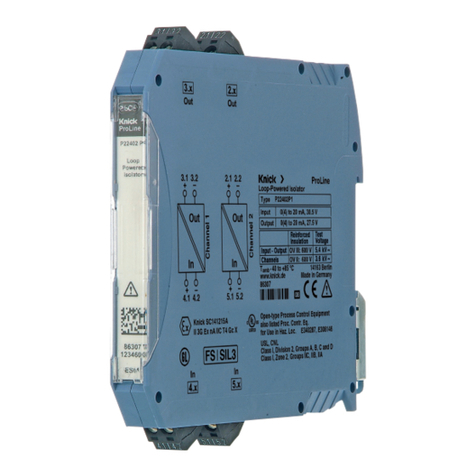
Knick
Knick ProLine P224 P1 Series User and safety manual

Murata
Murata GRT188R6YA225KE13 Series Reference sheet

Murata
Murata GQM22M5C2H680FB01 Series Reference sheet
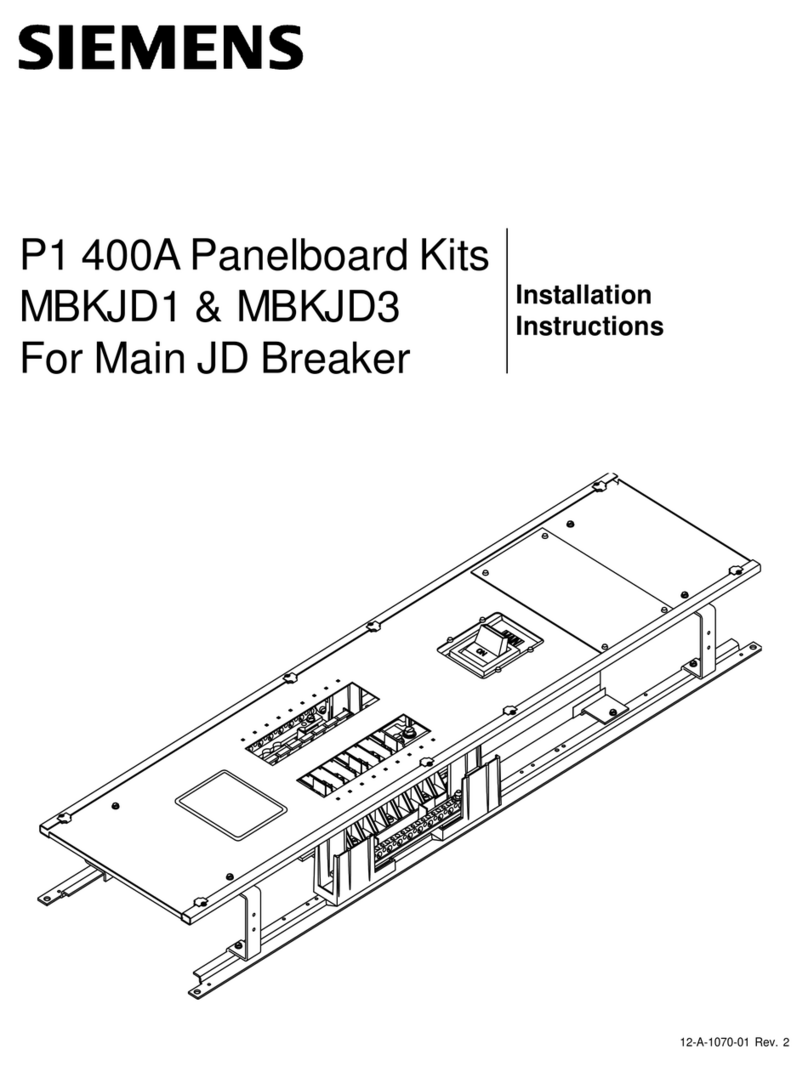
Siemens
Siemens P1 400A installation instructions
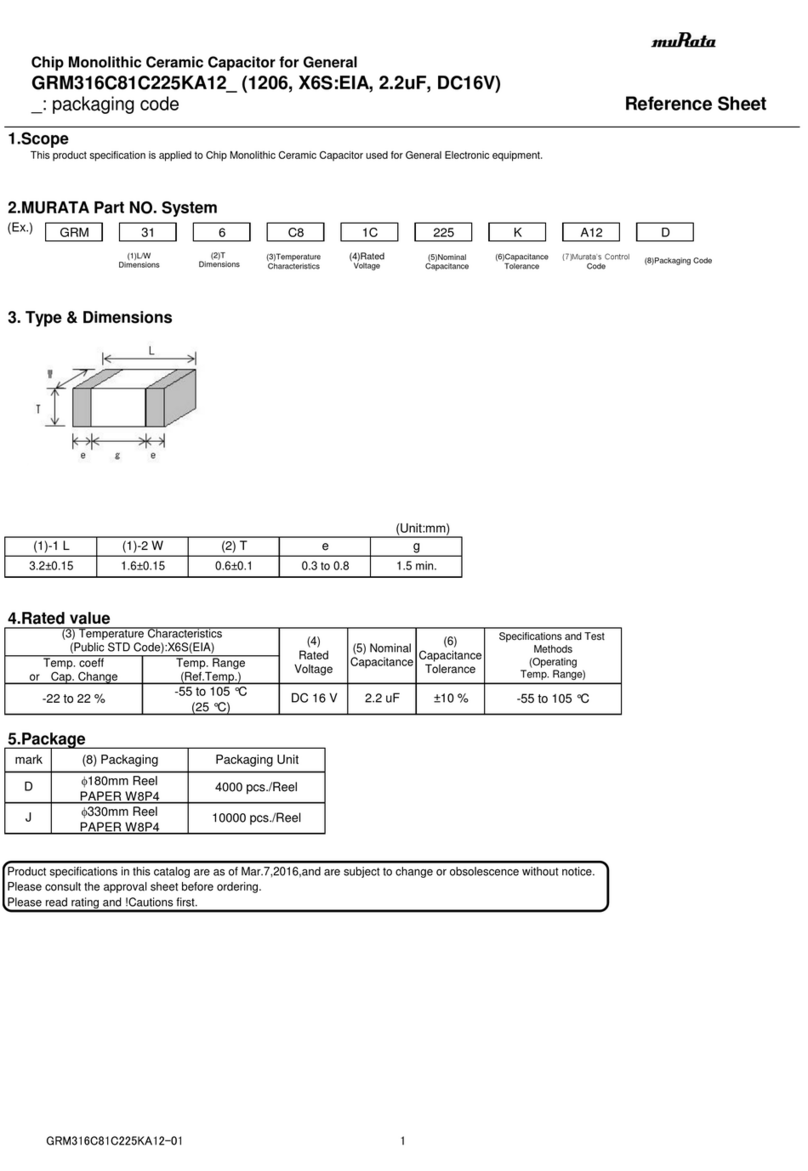
Murata
Murata GRM316C81C225KA12 Series Reference sheet


